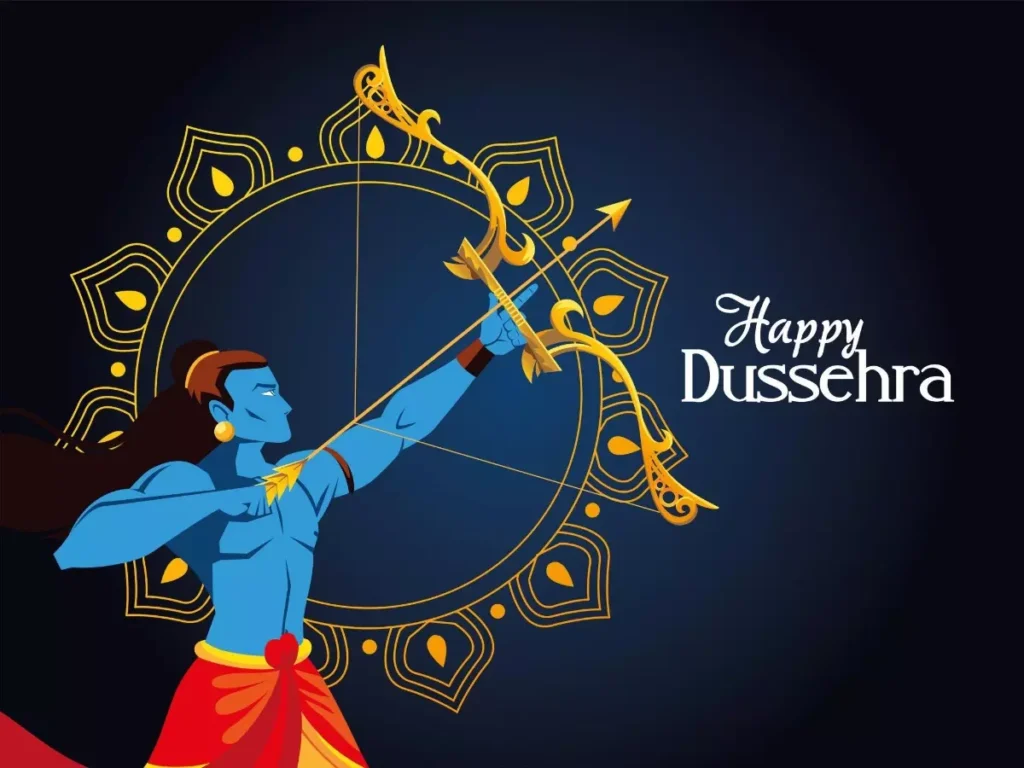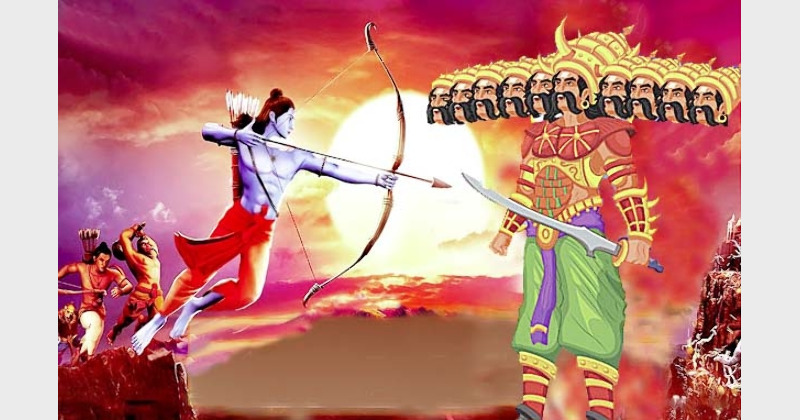Dussehra, also known as Vijayadashami, is a significant Hindu festival celebrated with great fervor and enthusiasm across India and other parts of the world. Observed on the tenth day of the Ashvina month, according to the Hindu lunar calendar, this festive occasion marks the triumph of good over evil, knowledge over ignorance, and righteousness over unrighteousness.
Mythological Significance
The celebration of Dussehra is deeply rooted in Hindu mythology. The festival commemorates the victory of Lord Rama, the king of Ayodhya, over the powerful demon king Ravana. According to the epic Ramayana, Ravana had abducted Rama’s wife, Sita, and taken her to his kingdom in Lanka. Rama, along with his brother Lakshmana and the monkey god Hanuman, waged a fierce battle against Ravana and ultimately killed him on the tenth day of the Ashvina month.
Similarly, in another mythological legend, Goddess Durga defeated the buffalo-demon Mahishasura after a nine-day battle, and the tenth day is celebrated as Vijayadashami, marking the victory of good over evil.
Cultural Significance
Dussehra is a celebration of the eternal struggle between good and evil, with good ultimately emerging victorious. The festival serves as a reminder of the importance of adhering to the path of righteousness, truth, and morality. It also symbolizes the destruction of inner demons, such as ego, greed, and anger, which hinder our spiritual growth.

Traditions and Customs
The festivities associated with Dussehra vary across regions, but some common traditions and customs include:
- Effigy Burning: Large effigies of Ravana, Meghnad, and Kumbhakarna are burned to symbolize the destruction of evil.
- Ramlila: The enactment of the Ramayana, depicting the story of Rama’s victory over Ravana.
- Durga Puja: In Eastern India, particularly in West Bengal, Durga Puja is celebrated with great fervor, honoring Goddess Durga’s victory over Mahishasura.
- Shami Tree Worship: In some parts of India, the Shami tree is worshiped, as it is believed to have sheltered Lord Rama during his exile.
- Saraswati Puja: In some regions, Dussehra marks the beginning of Saraswati Puja, honoring the goddess of knowledge and learning.
Regional Celebrations
Dussehra celebrations differ across regions, reflecting local customs and traditions:
- Mysore Dasara (Karnataka): A grand procession of elephants, horses, and cultural tableaux.
- Kulu Dussehra (Himachal Pradesh): A week-long celebration featuring music, dance, and theater performances.
- Bengal Durga Puja (West Bengal): A five-day celebration honoring Goddess Durga.
The Triumph of Good over Evil: Unveiling the Significance of Dussehra or Vijayadashami
Dussehra or Vijayadashami is a joyous celebration that reinforces the timeless message of the triumph of good over evil. As we participate in the festivities, we are reminded of the importance of upholding righteousness, morality, and knowledge. This ancient festival continues to inspire generations, fostering a sense of community, cultural heritage, and spiritual growth.
Key Dates for Dussehra Celebrations
- Dussehra typically falls between September 20th and October 15th.
- Date varies according to the Hindu lunar calendar.
Final Thoughts
As we celebrate Dussehra, let us reflect on the significance of this ancient festival and strive to:
- Embody the values of Lord Rama and Goddess Durga.
- Vanquish our inner demons.
- Uphold knowledge, righteousness, and morality.
- Foster a sense of community and cultural heritage.


